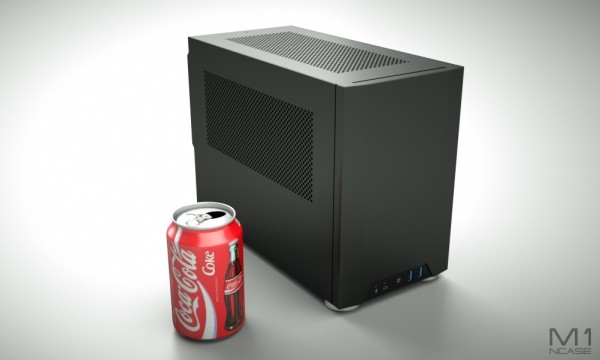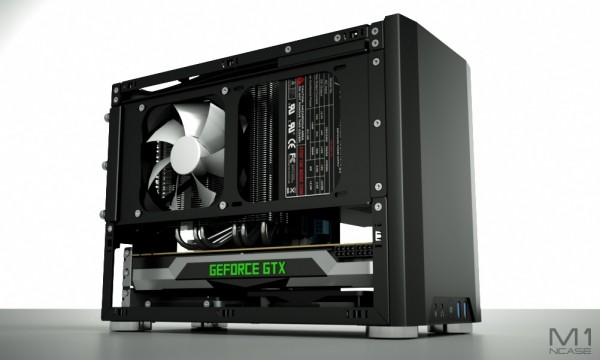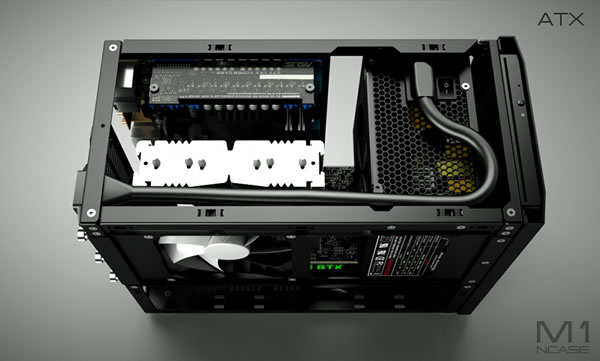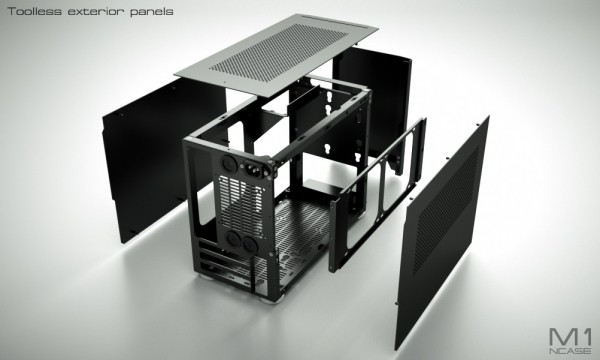Although there are some solid small form factor cases available, none of them are perfect – at least not if you're Wahaha360 and Necere from HardOCP's forum. Disappointed by popular enclosures such as the SilverStone SG05, the guys teamed up last year to design their ideal chassis. After months of feedback from HardOCP members and Lian Li engineers, the pair have unveiled the fruits of their labor: the NCase M1.

Some of the M1's specs could change by the time it hits production, but on paper, the 12.59-liter box has the features you'd expect from a standard enthusiast chassis. At 160 x 328 x 240mm (250mm with the feet – 6.29 x 12.91 x 9.44in), the case is designed for Mini-ITX motherboards, which is more compact than MicroATX at 170mm long versus 244mm and allows the M1 to house a power supply in a unique top front position.

Besides supporting standard ATX power supplies, the M1 can accommodate a triple-slot graphics card up to 317.5mm (12.50in) long, a processor cooler up to 105mm (4.13in) tall, four 120mm fans and one 80/92mm fan, dual 120mm radiators, as many as three 3.5in or four 2.5in storage drives, and one slim slot-loading optical drive. The front panel carries two USB 3.0 ports and audio jacks around a central power button.

As we hinted above, the M1 is still in a prerelease phase. NCase wants to have two prototypes made by Lian Li soon, but they need a few bucks to get started. The team is asking for $3,000 via Indiegogo and they're a little over halfway there with four weeks to go. Once the prototypes are created and the design is refined, NCase plans to gather funding for a limited production run where the M1 will be sold for $160 to $200.

There are only four donation tiers: $1 gets you a pat on the back, $5 earns you a mention on NCase's site, $10 puts you on a priority shipment list for the production run and $2,000 scores you a prototype when NCase is done testing. Besides helping two enthusiasts build their dream case, NCase says backing the project will prove to companies that getting involved with the community can break stagnation and promote innovation.